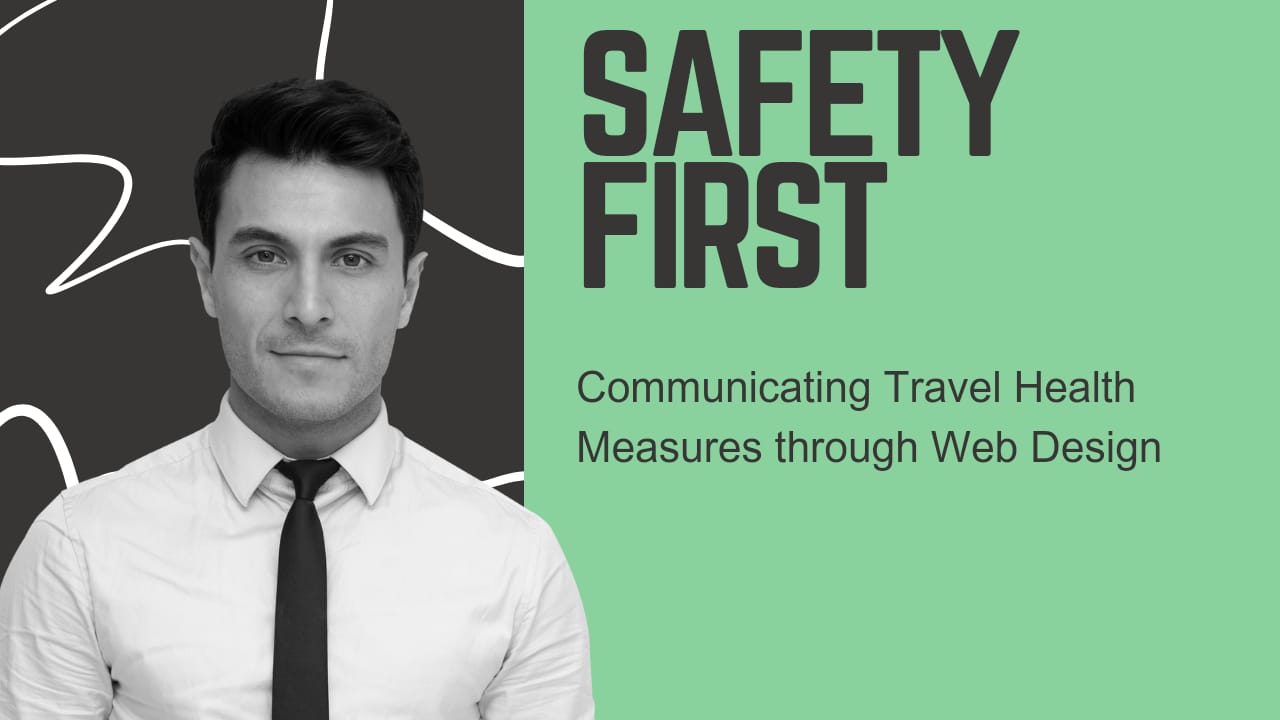
In an era where global travel has become an integral part of our lives, ensuring the safety and well-being of travelers has taken center stage. The COVID-19 pandemic brought to light the critical need for effective communication of travel health measures. In this digital age, web design has emerged as a powerful tool to convey essential information to travelers.
This blog explores how the concept of "Safety First" can be seamlessly integrated into web design to communicate travel health measures, ensuring a secure and confident journey for all.
Highlights:
- The importance of clear communication
- User-centric interface design
- Interactive visuals and icons
- Timely updates and alerts
- Language accessibility
- User-friendly mobile design
- Testimonial and social proof
1. The Importance of Clear Communication:
When it comes to travel health measures, clarity is key. Travelers need easily accessible information that is concise, accurate, and up-to-date. Web design offers a platform where complex information can be broken down into digestible chunks through well-structured layouts, intuitive navigation, and visually appealing elements.
2. User-Centric Interface Design:
A user-centric approach involves designing the website with the traveler in mind. Key health measures should be prominently displayed on the homepage, offering quick access to critical information. Implementing a clean and organized layout ensures that visitors can find what they need without hassle.
3. Interactive Visuals and Icons:
Visuals speak louder than words. Utilize icons, info graphics, and imagery to represent various health measures. For instance, a simple "mask" icon can symbolize mask mandates, making it easier for users to understand the requirements at a glance.
4. Timely Updates and Alerts:
The dynamic nature of travel health measures requires real-time updates. Implement a notification system that alerts users about any changes or updates to protocols, ensuring that travelers stay well-informed before and during their journeys.
5. Language Accessibility:
In a global context, language can be a barrier. Offer content in multiple languages to cater to an international audience, making sure that every traveler can comprehend the safety guidelines effectively.
6. User-Friendly Mobile Design:
Recognize the prevalence of mobile devices in travel planning. Ensure that the web design is responsive and mobile-friendly, allowing travelers to access health information conveniently on the go.
7. Testimonials and Social Proof:
Build trust by including traveler testimonials or endorsements from health organizations attesting to the credibility of the communicated health measures. This can alleviate concerns and motivate travelers to comply with the guidelines.
Conclusion:
In the aftermath of the pandemic, prioritizing safety in travel has become paramount. The fusion of web design and travel health communication is a potent combination that empowers travelers with the knowledge they need to make informed decisions. As the digital landscape continues to evolve, so too does the opportunity to enhance the user experience and foster safe travels for all. By embracing the "Safety First" approach through thoughtful web design, we can embark on journeys with confidence, knowing that our well-being is safeguarded at every step of the way.